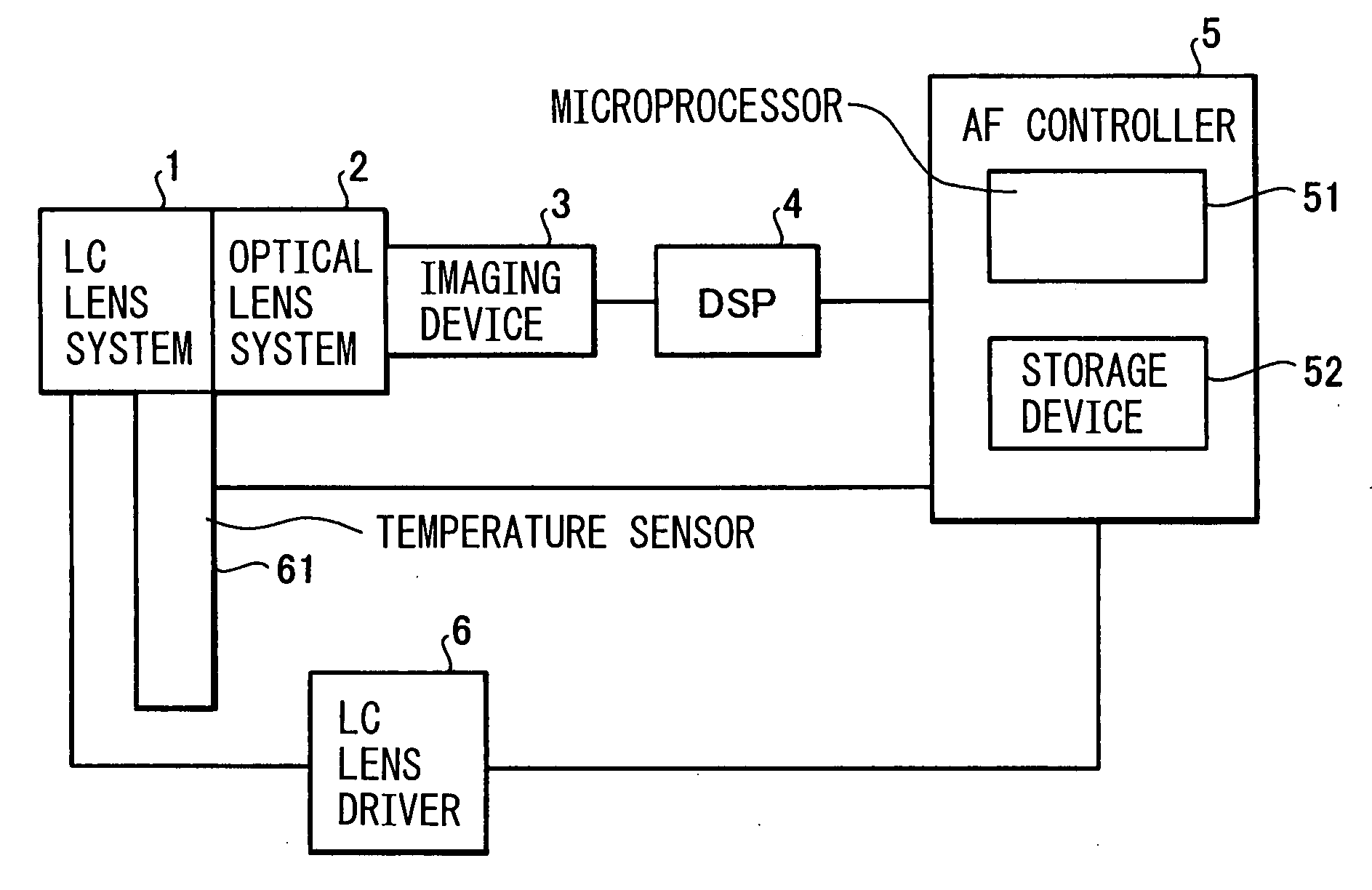Automatic focusing apparatus
a focusing apparatus and automatic technology, applied in the direction of camera focusing arrangement, printers, instruments, etc., can solve the problems of low impact resistance, large power required to drive the lens driving motor, complex focusing system, etc., and achieve the effect of reducing the time required for focusing
- Summary
- Abstract
- Description
- Claims
- Application Information
AI Technical Summary
Benefits of technology
Problems solved by technology
Method used
Image
Examples
embodiment 1
[0079]FIG. 1 is a block diagram showing the basic configuration of an automatic focusing apparatus. As shown in FIG. 1, the automatic focusing apparatus comprises a liquid crystal (LC) lens system 1, an optical lens system 2, an imaging device 3, a DSP (digital signal processor) 4, an autofocus (AF) controller 5, a liquid crystal lens driver 6, and a temperature sensor 61. The liquid crystal lens system 1 is constructed by combining a liquid crystal lens for P waves with a liquid crystal lens for S waves. The optical lens system 2 comprises a diaphragm, a group of lenses, and an infrared cutoff filter, through which an image of an object located at a prescribed distance from the optical lens system 2 is focused onto the imaging device 3. The imaging device 3 comprises an image sensor constructed from a solid-state imaging device, such as a CCD or CMOS imager, and an analog-digital converter. The temperature sensor 61 is mounted near the liquid crystal lens system 1, and is used to e...
embodiment 2
[0167]FIG. 19 is a block diagram showing the basic configuration of an automatic focusing apparatus according to the present invention. As shown in FIG. 19, the automatic focusing apparatus according to the present invention comprises a camera lens unit 70 and an autofocus controller 5. The camera lens unit 70 comprises a liquid crystal lens system 1, an optical lens system 2, an imaging device 3, a liquid crystal (LC) lens controller 100, and a temperature sensor 61. The liquid crystal lens system 1 is constructed by combining a liquid crystal lens for P waves with a liquid crystal lens for S waves. The optical lens system 2 comprises a diaphragm, a group of lenses, and an infrared cutoff filter, through which an image of an object located at a prescribed distance from the optical lens system 2 is focused onto the imaging device 3. The imaging device 3 comprises an image sensor constructed from a solid-state imaging device, such as a CCD or CMOS imager, and an analog-digital conver...
PUM
 Login to View More
Login to View More Abstract
Description
Claims
Application Information
 Login to View More
Login to View More - R&D
- Intellectual Property
- Life Sciences
- Materials
- Tech Scout
- Unparalleled Data Quality
- Higher Quality Content
- 60% Fewer Hallucinations
Browse by: Latest US Patents, China's latest patents, Technical Efficacy Thesaurus, Application Domain, Technology Topic, Popular Technical Reports.
© 2025 PatSnap. All rights reserved.Legal|Privacy policy|Modern Slavery Act Transparency Statement|Sitemap|About US| Contact US: help@patsnap.com



